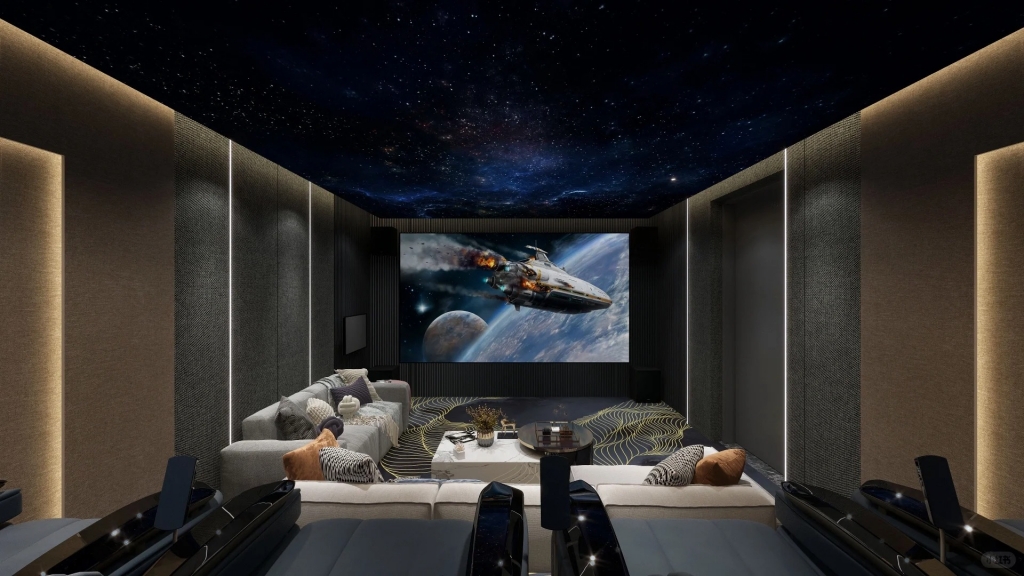Home Theater refers to a setup within a home designed to provide a cinema-like audio and visual experience. A home theater system typically includes video and audio equipment, as well as comfortable seating and optimized room layout, to create an immersive viewing and listening environment.

Key Components:
- Video Equipment:
- HDTV/Projector: Used to display high-quality video content. Modern home theaters often feature 4K or 8K high-definition TVs or use projectors to project onto large screens.
- Projection Screen: Used with projectors to enhance picture quality and viewing experience.
- Media Player: Plays Blu-ray discs, Apple TV, streaming content, or other digital media files.
- Audio Equipment:
- AV Receiver: The central unit for processing and amplifying audio signals, distributing them to various speakers.
- Speaker System: Includes front speakers, surround speakers, subwoofers, etc., providing surround sound effects. Common configurations include 7.1, 7.1.2 or 7.1.4 channels.
- Audio Decoder: Supports high-quality audio formats such as Dolby Atmos, DTS, etc., providing an immersive sound experience.
- Control System:
- Remote Control and Smart Controls: Used to manage all audio and video equipment, including volume adjustment, channel switching, and playback control.
- Smart Home Integration: Integrates the home theater system with smart home systems for control via voice assistants or smart apps.
- Seating and Layout:
- Comfortable Seating: Provides comfortable viewing seats, often equipped with adjustable headrests and footrests.
- Room Layout: Optimizes the room’s acoustics and sightlines to ensure that all viewers have a good viewing and listening experience. Includes acoustic treatments like sound-absorbing materials and soundproofing.
- Accessories and Additional Features:
- Blu-ray Player: Plays high-resolution Blu-ray discs, offering superior video and audio quality.
- Gaming Consoles: Provides high-quality gaming experiences in the home theater.
- Streaming Devices: Supports streaming content over the internet, such as Netflix, Disney+, etc.
Application Scenarios:
- Home Entertainment: Provides high-quality video and audio experiences for watching movies, TV shows, sports events, etc.
- Gaming: Offers immersive gaming experiences with high-resolution displays and surround sound.
- Social Gatherings: Used for family gatherings or friend get-togethers, providing a comfortable environment for enjoying entertainment.
- Private Cinema: Provides a dedicated viewing space for movie enthusiasts, enhancing the quality of home entertainment.
Advantages:
- High-Quality Audio and Visual Experience: Delivers cinema-level picture and sound quality, enhancing viewing and listening enjoyment.
- Personalized Setup: Allows for customization of equipment and room layout based on personal preferences, creating an ideal viewing environment.
- Diverse Entertainment: Supports various entertainment content, including movies, music, and games, catering to different needs.
- Comfort and Convenience: Enjoy cinema-quality entertainment at home without the need to go out, offering high-quality audio and visual experiences.
Overall, a home theater system integrates advanced audio and video technologies with comfortable design to provide a high-quality entertainment experience, allowing family members to enjoy cinema-like effects within their own home.
